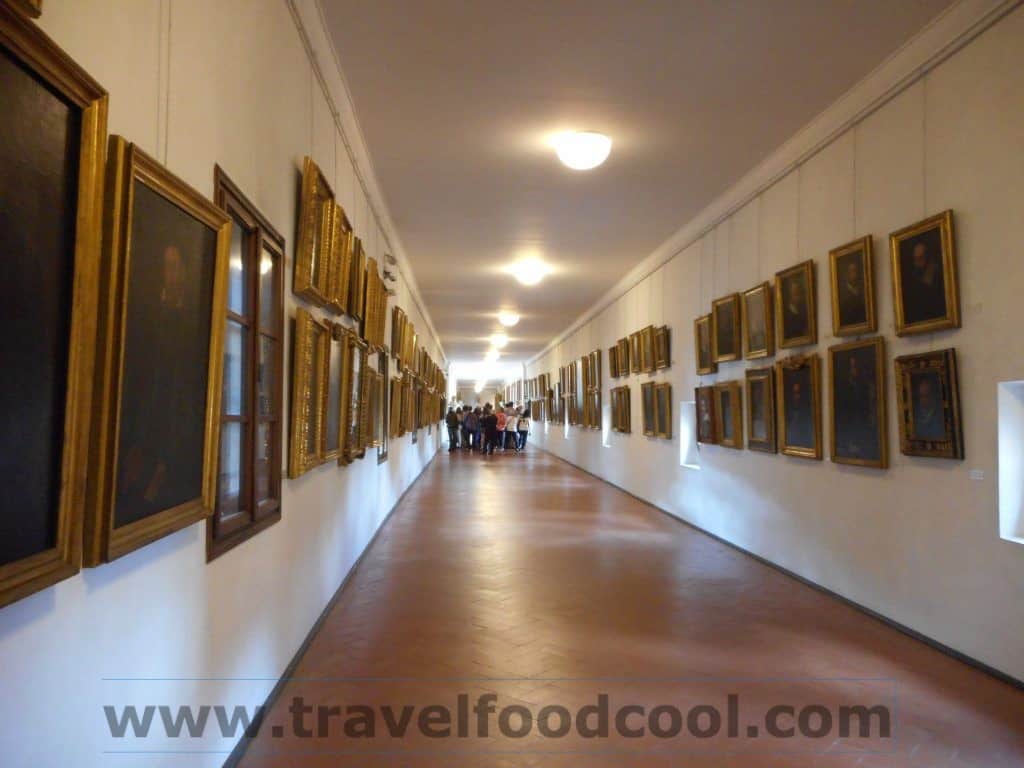
The Vasari Corridor is a 1-kilometer long self-portrait gallery. Originally, when started by Cardinal Leopoldo de’ Medici, artists were commissioned to paint their self-portrait for the collection; but the Vasari collection got so famous that artists who arrived in Florence would show up at the gallery with their self-portrait in hand.
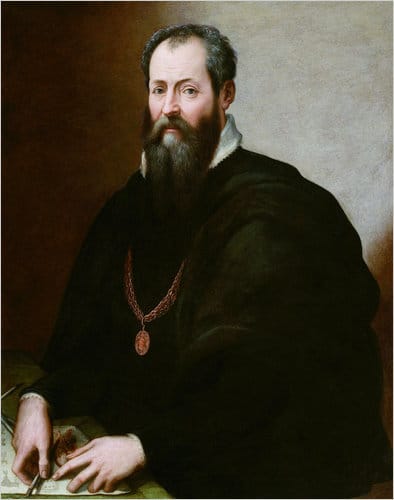
There are famous faces, like Rubens and a portrait of Leonardo di Vinci, said to be painted by someone other than Leonardo. I have some photos of a few of the self-portraits from the over 800 pieces in the collection. What was of interest to me, however, were the portraits of the women. Women at the time were mostly assistants to their husbands or fathers. They were allowed to paint, but only certain subjects, like portraits, still lifes and animals. They were not allowed to paint gods, mythological figures, or war scenes. As women, they did not have access to nudes, either live or otherwise, so their study of the human form was much more difficult than their male counterparts.
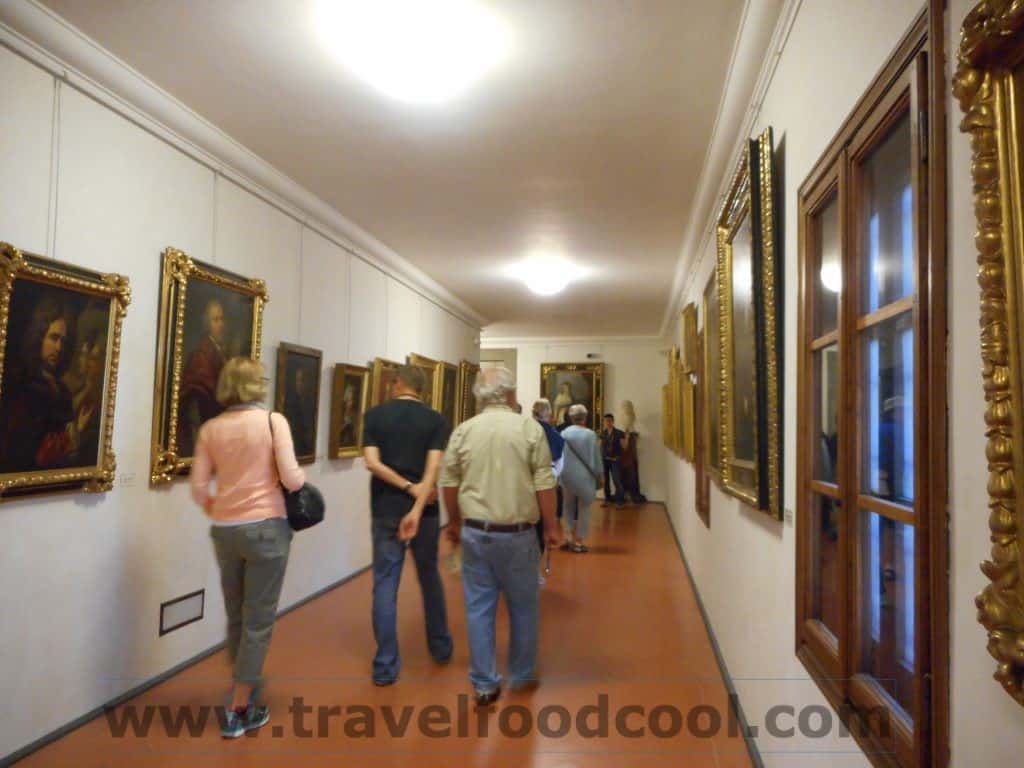
One of the pieces I found interesting was of Tintoretto’s daughter, who was a Venetian painter in her own right. Her name was Marietta Rubosti and she was referred to as Tintoretta. Our female guide told us that Tintoretta was seen in her time as an example of the positive effects of educating women. She is seen posing with a harpsichord and musical text from “Madonna per voi ardo“). [Small trivia note: The opening line of the song is “My lady I burn with love for you, and you do not believe it”, leading people to suggest that the portrait was originally intended for her husband, not the gallery.]
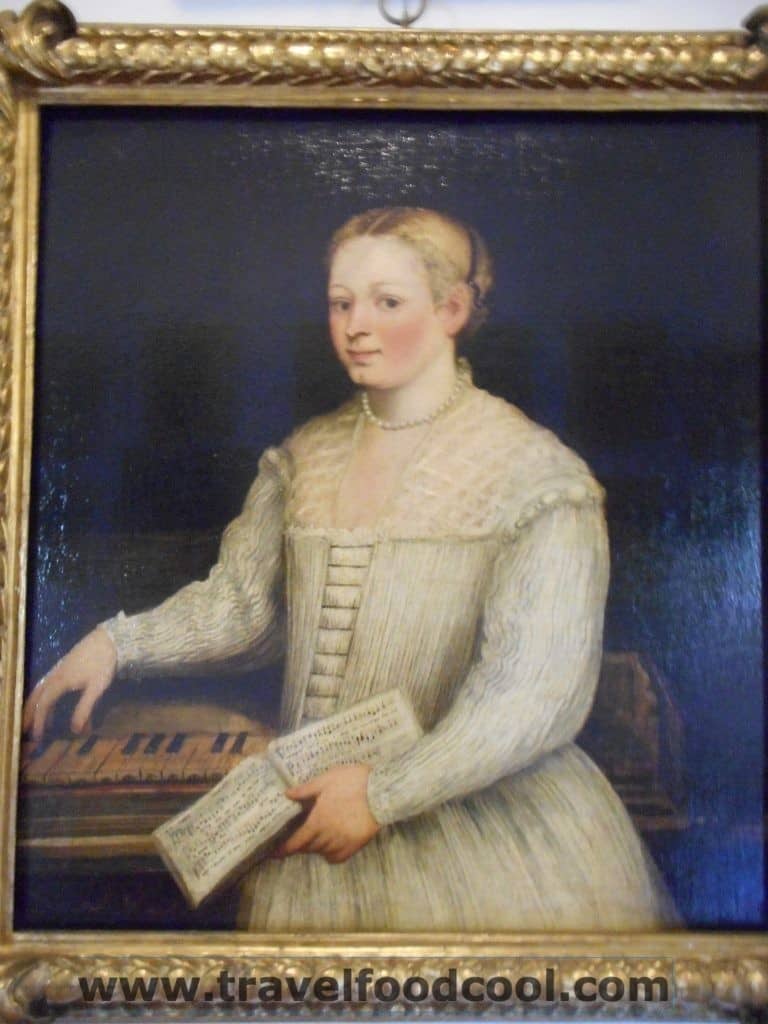
Rosalba Carriera was another woman of note. She worked in pastels which were a change from the dark colours traditionally used by male painters. As a woman, she was allowed to paint portraits. She was in favour for her flattering depictions and was commissioned to paint portraits of three women whose father was looking for husbands for them.
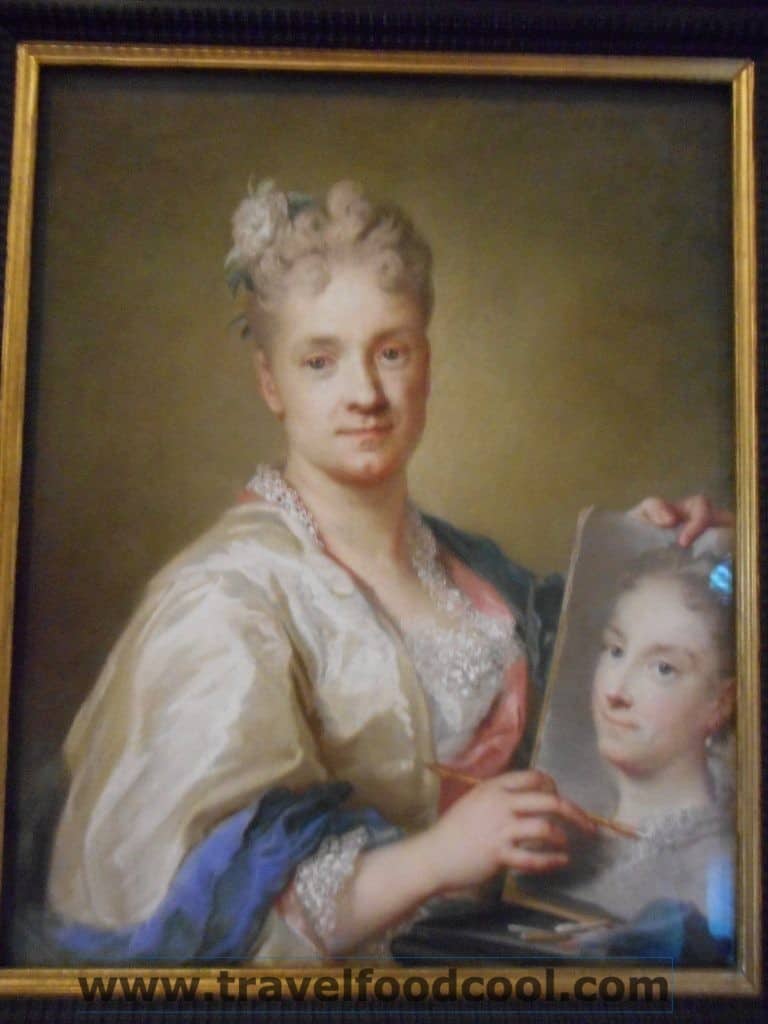
It is interesting that the Vasari Corridor has four portraits painted by Rosalba, as these are not self-portraits. Three of the ladies portrayed are sisters (the top right in the photo below is not). The sisters, daughters of the Duke of Modena, were not considered overly attractive and the flattering paintings were sent about in hopes of finding them husbands (the original Match.com). It worked for the woman on the top left, twice. She married twice, which I’m sure ticked off her other two sisters, who never married.
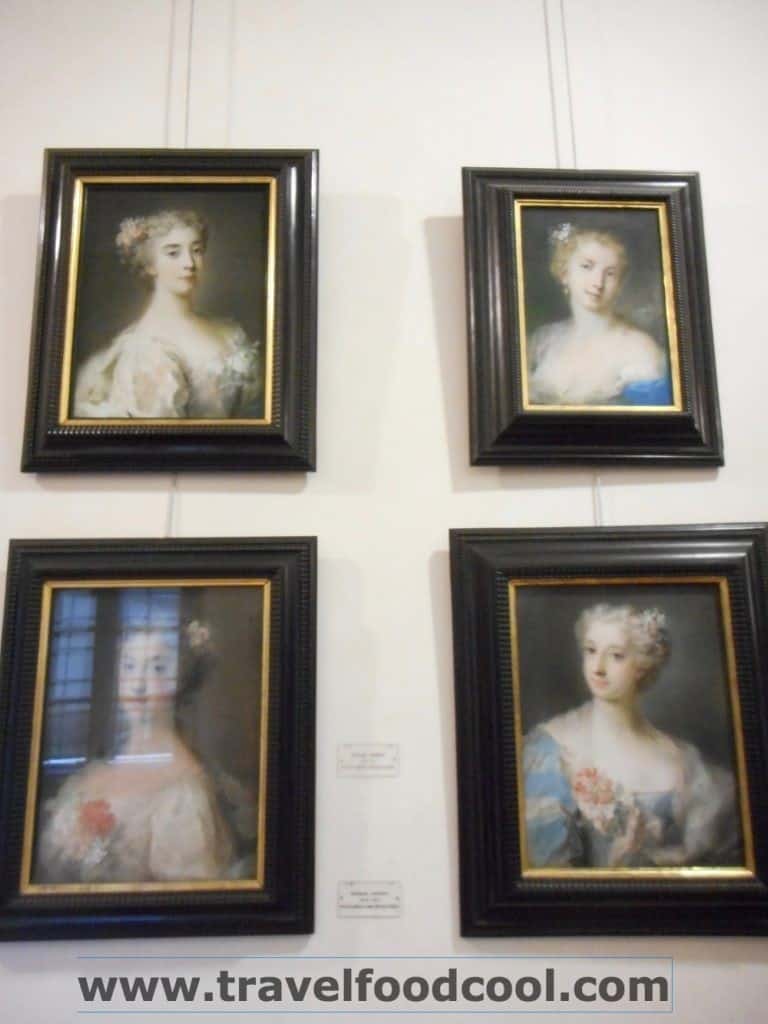
A favourite piece of many visitors is Louise Élisabeth Vigée Le Brun (also referred to as Élisabeth Louise Vigée Le Brun). A self-taught painter of the neoclassical style, she was the favourite artist, and considered the official portraitist, of Marie Antoinette, painting over 30 portraits of the Queen and her family. Le Brun fled France at the time of the Revolution, fleeing to Italy, Austria and Russia. An advantage of a self-portrait? Her youthful face shows her younger than her real age (32 – 35 years old based on various reports) when she painted the portrait. The portrait also caused a bit of a scandal, as she was smiling and open mouthed, which was not the norm of the day.
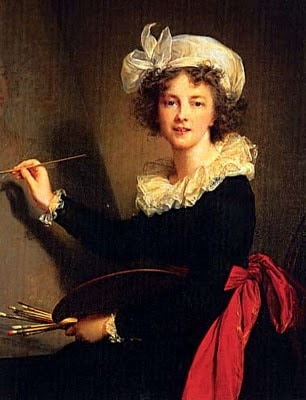
Sofonisba Anguissola was considered on of the greatest female artists of the time. She was considered so talented that even the great Michelangelo (who disliked women) wrote frequently to her, and informally trained her, through his letters. She became the court painter of King Phillip II of Spain and his wife, Elizabeth of Valois. Her religious paintings were said to shine with her piety. Vasari himself said of her “by herself has created rare and very beautiful paintings”.
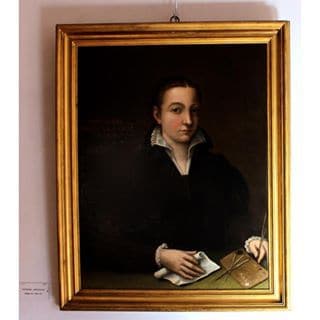
Ever wondered how an artist painted a self-portrait? Johannes Grumpp, the Flemish artist, cleverly painted a self-portrait of himself painting his self-portrait.
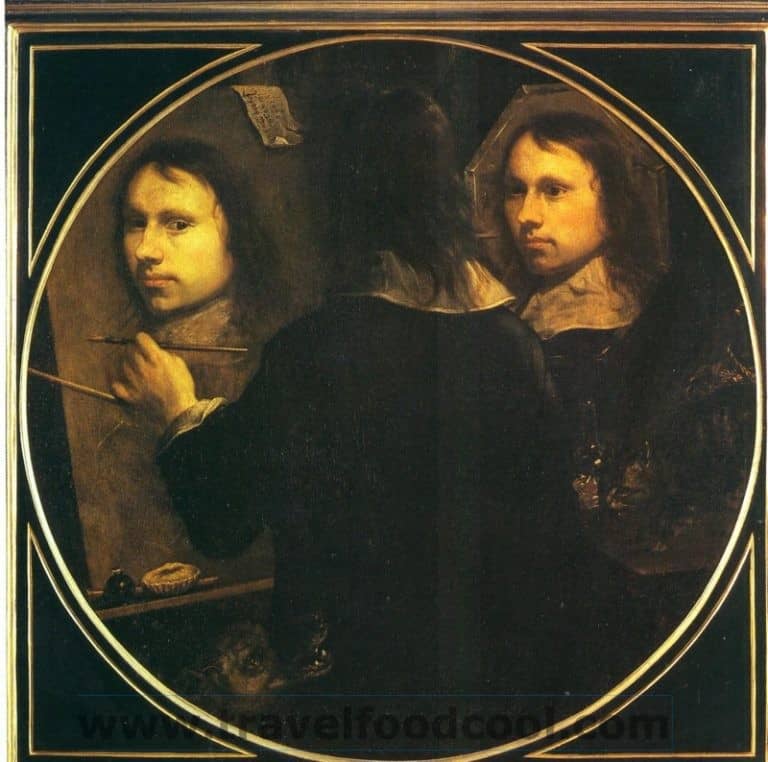
The artists themselves had their heroes. Rubens and Van Dyck were both favourties of Élisabeth Vigée Le Brun. After the death of her father, she would go to Luxembourg Palace to view their works, and, as an aspiring artist, to learn and copy from them.
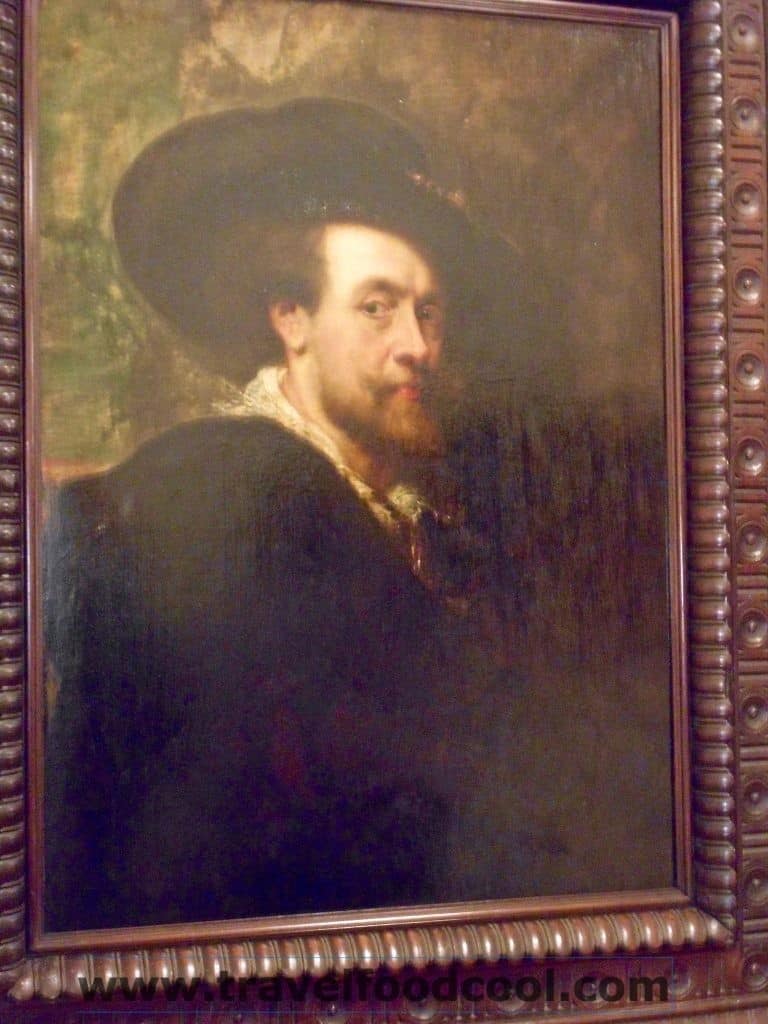
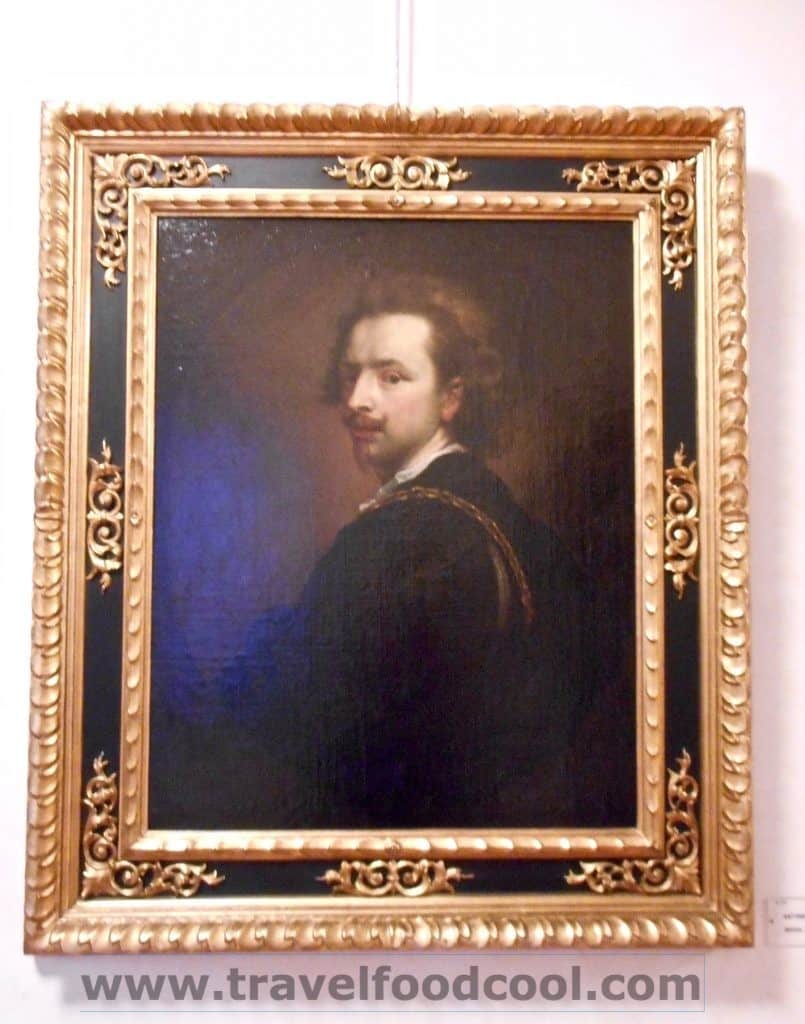
So dedicated was the Cardinal to this collection that not only would the de’ Medici family commission artists to paint their self-portraits, but they would also seek out existing self-portraits. They even acquired an incomplete Bernini self-portrait in Rome and had someone else finish it. (There is another copy of this portrait in the Borghese Gallery in Rome.)
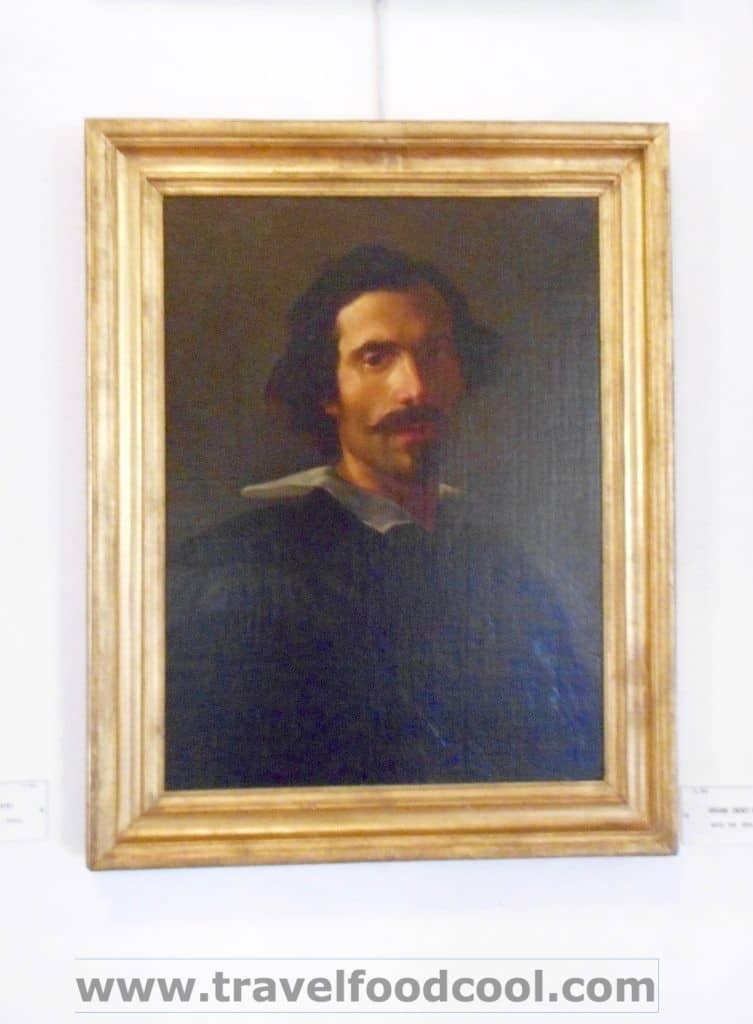
While the gallery is mostly self-portraits from the 1600-1700s, in the 1970s, the gallery decided to start the tradition again and commissioned a self-portrait from Marc Chagall.
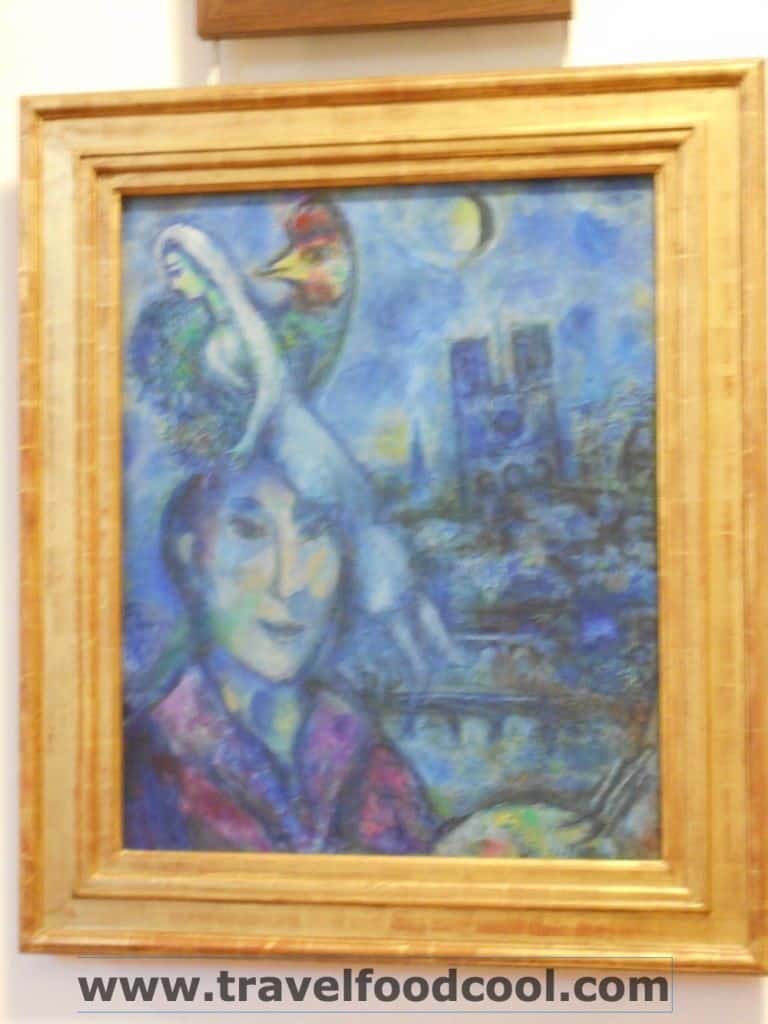
The gallery still continues to collect self-portraits from notable artists which they exhibit both in permanent and temporary displays. The portrait of Umberto Brunelleschi, great-grandson (I may be missing a few “greats” in that description) of famed Filippo of Florence’s Duomo and dome, sits across from Chagall.
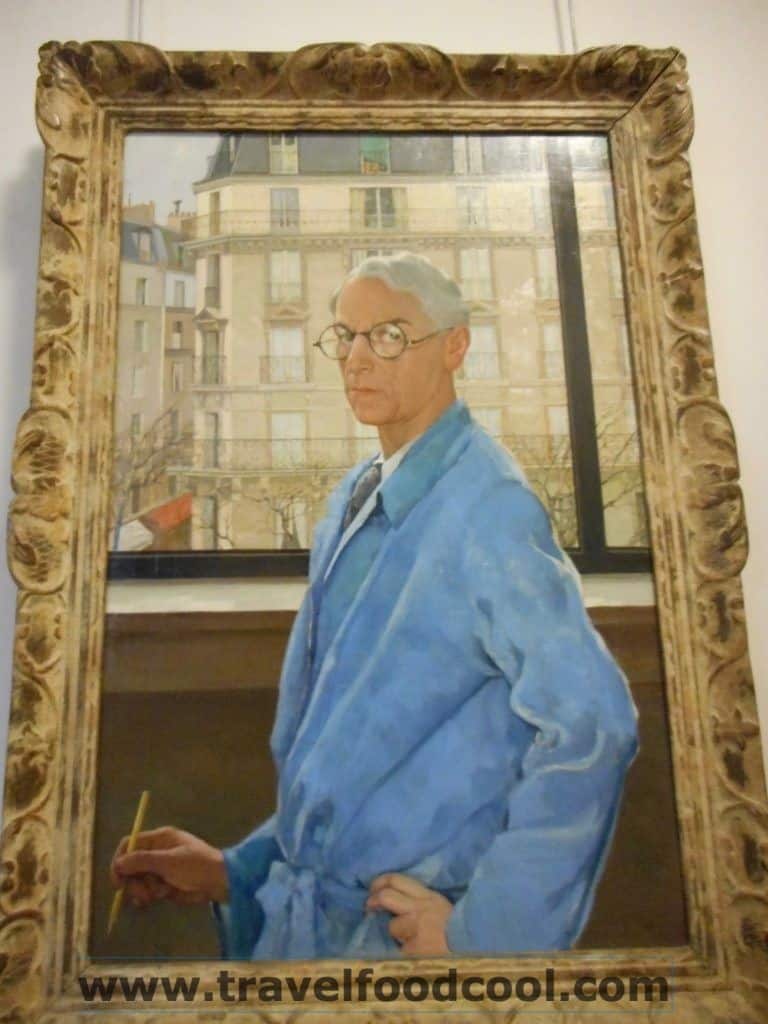
The gallery continues through to the exit which takes you out to the Buontalenti Grotto of the Pitti Palace.
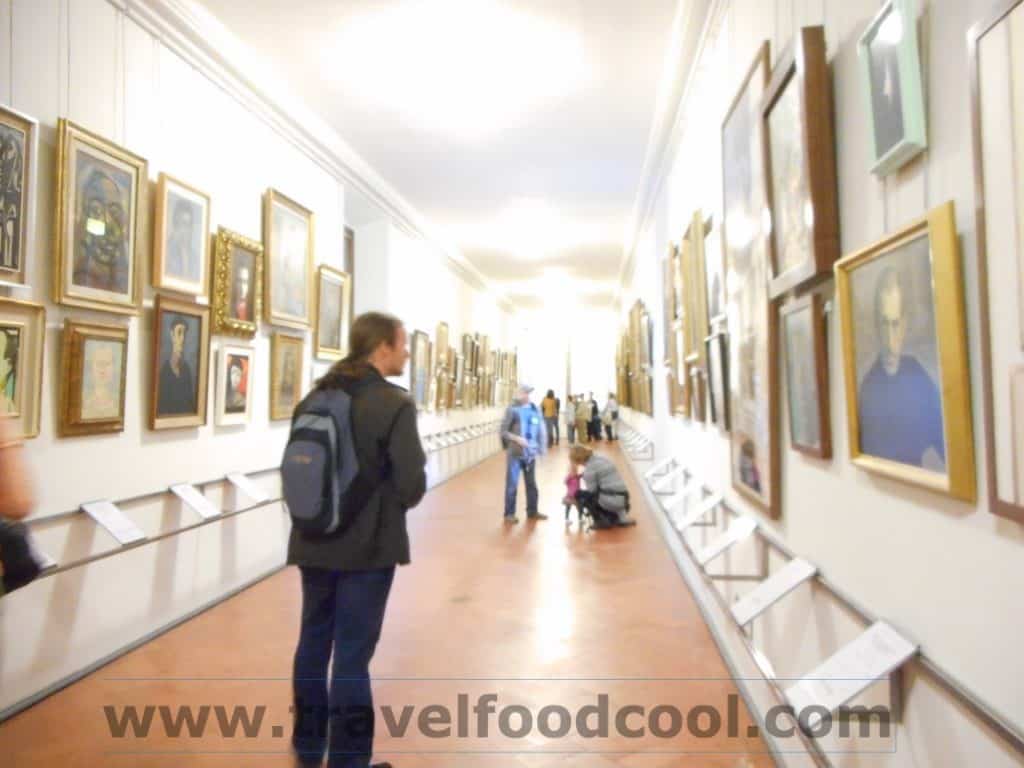
Just prior to the exit is the temporary gallery where at the moment you can see one last lady, Yayoi Kusama (known to most for her Louis Vuitton collections), who has painted her portrait in her famous “dots” style, and as perhaps a nod to Élisabeth Vigée Le Brun, made herself look a touch younger than her years.
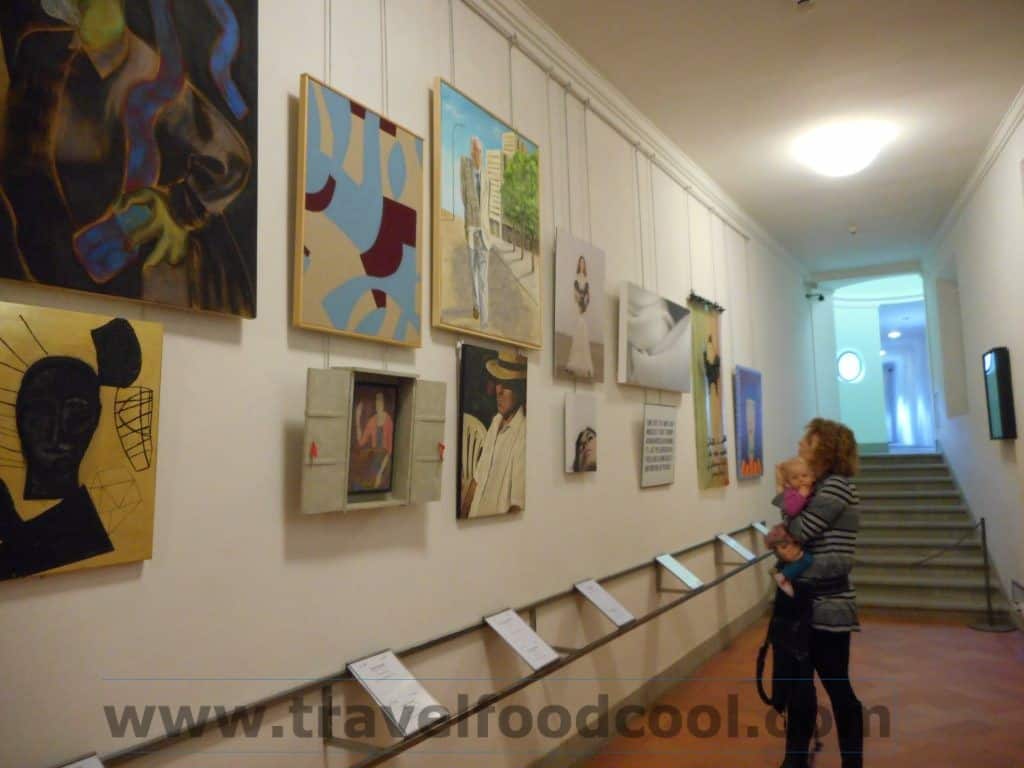
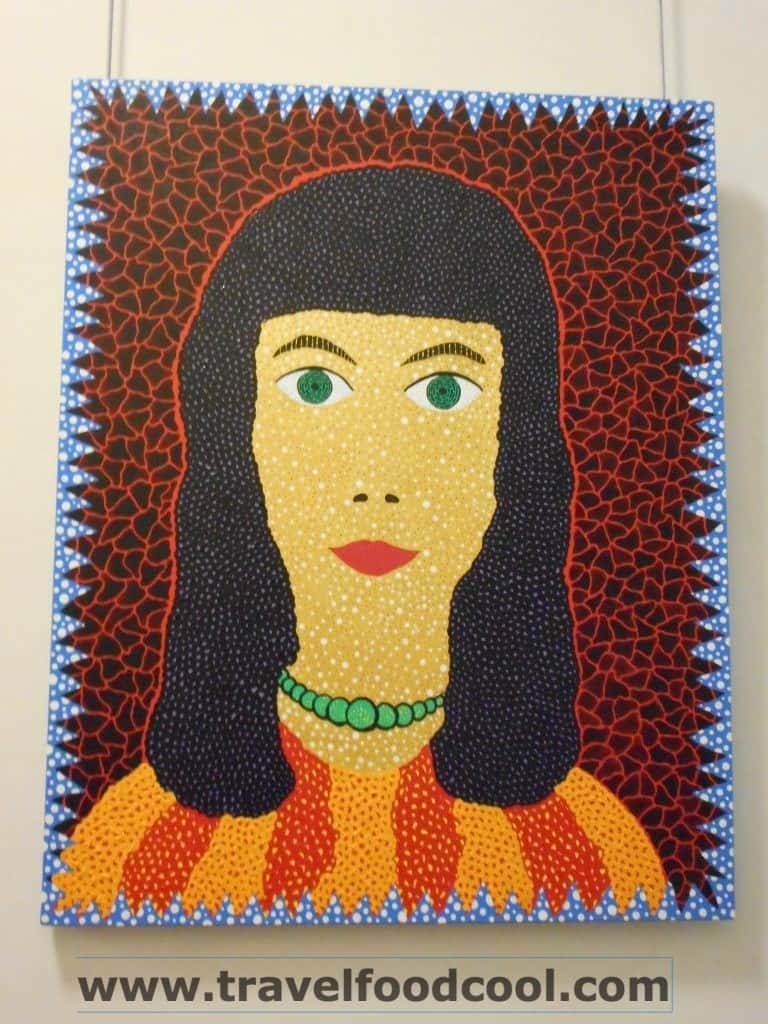
While the gallery in the Vasari Corridor is not a traditional art gallery, it is interesting to see some famous, and not so well known faces, and how they chose to portray themselves.
Interested in reading about the Corridor itself? Click here for The Vasari Corridor – Part 1 – The Tunnel.
Interested in reading about the people who made the gallery happen? Click here for The Vasari Corridor – Part 2 – The Influencers.


